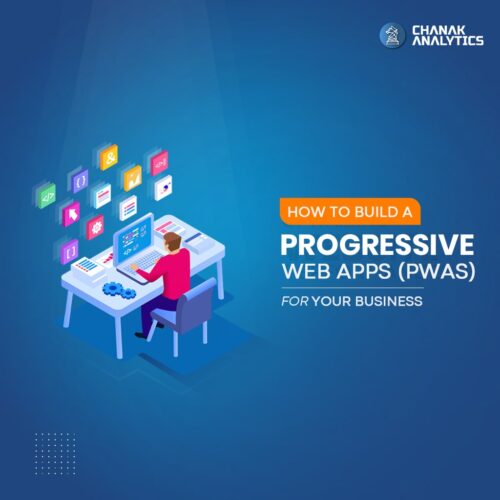Serverless Architecture: A Paradigm Shift in Web Development


Serverless computing is a game changer in web development as it does not require a dedicated server. With cloud computing, developers no longer need to worry about servers; they just need to write code while the cloud vendors take care of the infrastructure. This method thus provides a way of creating applications that are efficient and can handle many clients within a web-based environment. Focusing on less complex operations, serverless architecture makes it easier and faster to develop new iterations and adapt to the needs of users. This is changing the way we develop and maintain modern web applications.
Exploring Traditional Server-Based Web Development
Classic server-side Web development employs specialised servers for deploying, controlling, and configuring applications. Here’s a quick rundown:
- Servers Needed: Software professionals have to prepare and manage physical or present servers.
- Maintenance: It has to be updated and maintained by releasing regular patches for security fixes.
- Scalability: The dynamics of scaling can be challenging and expensive.
- Infrastructure Management: Strategic management at the hardware and software levels is often required.
- Cost: This implies that they have charges during low traffic despite having limited activities.
The difference with serverless on AWS is that the user does not manage a server and does not need to scale instances of applications manually. It is done automatically while also optimising expenses by paying only for the time the application was used.
Embracing the Serverless Revolution
Serverless architecture is revolutionising web development. Developers do not have to be bothered by servers anymore. The other difference is that cloud providers take care of infrastructure. This shift encourages concentration on coding and innovation. It is elastic—it scales according to demand. It is also easy on the pocket since it bills only for what was consumed. It is more deployable, which means that the iterations and the updates can be made faster. This shift has been championed by cloud service providers such as AWS Lambda and Google Cloud Functions, among others. It’s a developer’s paradise—more time innovating, less time tending to servers.
Discover the Game-Changing Benefits of Serverless Architecture
Serverless architecture is transforming the way developers build and deploy web applications. Here’s why it’s gaining popularity:
- Scalability and Efficiency: It instinctively adjusts based on usage to avoid standby times and high energy bills.
- Simplified Deployment: Developers write code, and someone else is responsible for the underlying hardware and software.
- Cost-Effective: Pay as you go; this helps in avoiding costs that are associated with excesses.
- Faster Time-to-Market: Deeply enhances developing the creation and delivery process because it is very fast and it does not take a lot of time before the creation is delivered.
- Event-driven: responsible for responding to events and executing functions that increase responsiveness.
- Automatic Maintenance: Serverless providers take care of maintenance, updates, and security patches.
- Ecosystem Growth: Serverless computing services and platforms are becoming more and more common.
Serverless architecture remains one of the most innovative technologies that focuses on cost efficiency and agility in current web development models.
Common Use Cases for Serverless Architecture
There have been tremendous changes in the world of web development since the emergence of serverless architecture. Here are some common use cases:
- Web and Mobile Backends: Easily create high-performance backends that don’t require server maintenance.
- Event-Driven Applications: Ideal for dealing with activities such as file uploads, form submissions, and database modifications.
- API Gateways: Build and secure APIs to integrate applications.
- Data Processing: Handles tasks like image processing, data transformations, and real-time data analysis.
- Chatbots and Voice Assistants: Introduce chatbots and voice assistants that enable on-demand collaboration.
- IoT Applications: Handle the information from IoT gadgets most efficiently.
Serverless architecture is beneficial for development as it eliminates server management, is cost-efficient, and allows for enhancing scalability. It is particularly suitable for modern and agile applications.
Exploring the Core Elements of Serverless Architecture

The serverless paradigm is transforming the way web applications are created. Here are its key components:
- Serverless Backend: Responsible for server operations and whatever a developer is doing on that server. No server maintenance is needed.
- Functions as a Service (FaaS): Code is run to act as the response to an event. It is extremely scalable and efficient.
- Low Code/No Code Development: Makes the process of building apps easier. It is great for non-developers and quick application development.
- APIs and microservices: support modularity in development. It improves flexibility and reusability.
- Event-driven architecture: reacts to actual developments in real time and enhances performance and responsiveness.
- Enterprise Development: It scales effortlessly and helps you meet complex business needs.
Serverless architecture helps developers create applications with better resiliency. It is a game changer in the technology industry.
Essential Tools and Frameworks for Mastering Serverless Development
Are you navigating serverless development? Here are some of the top tools and frameworks to streamline your journey:
- AWS Lambda is Amazon’s serverless computing service designed to manage microservices without the need for servers.
- Google Cloud Functions allows you to quickly train and deploy machine-learning models to the cloud using standard Python code.
- Azure functions are ideal for complicated environments, with easy access to various Azure services.
- Netlify is an excellent solution for hosting web apps with a no-code CI/CD deployment pipeline.
- A Serverless Framework is a serverless application framework and platform that allows for cloud forking and deployment.
These technologies help your cloud development platform run smoothly, such as when deploying and managing serverless applications.
Key Hurdles and Insights for Embracing Serverless Architecture
Adopting serverless architecture offers exciting benefits but also comes with its own set of challenges and considerations.
• Vendor Lock-In
Selecting one development platform for a cloud can restrict platform agility and further bind customers to a certain platform and cloud provider.
• Cold Starts
Serverless functions may also have latencies when they begin, which means that performance will suffer for infrequently used functions.
• Complex Debugging
Debugging can be harder since serverless employ a different architecture than conventional applications.
• Cost Management
It provides cost efficiency, but the service’s use might be more expensive due to unexpected overload.
• Security Concerns
The serverless paradigm poses a challenge for maintaining data security and compliance since serverless architecture does not guarantee data security.
All these factors must be considered well and appropriately for proper migration to serverless infrastructure.
Essential Tips for Mastering Serverless Architecture in Your Projects

Serverless architecture has dramatically changed the world of web application developers by providing them with scalability and efficiency. Implementing this paradigm effectively involves following best practices to maximise its benefits:
- Modularization: It is recommended to divide your application into independent parts with separate functions. This makes it easier to keep the application up-to-date and scale.
- Security: Grant access to functions solely to increase privileges. Database credentials should be used instead of hard-coded strings by storing them in environment variables.
- Monitoring and Logging: Keep track of the system using the monitoring capabilities of the operating system and configure thorough logging. This is useful to avoid bugs and inefficiencies.
- Automated Deployment: Start adopting CI/CD systems to streamline deployment processes. This can be extremely fast, and the risk of human error is virtually eliminated.
- Cost Optimisation: Manage function running time and use scaling options to avoid paying for resources. Use these resources for monitoring and re-distribute them when needed.
- Testing: Use unit testing at the function level. Check performance under stress and compatibility with other applications.
Following these best practices will allow developers to maximise the power of serverless architectures, producing more effective applications.
Future Trends in Serverless Architecture
Due to its scalability and cost-effectiveness, serverless development is expected to become an important part of the web development strategy in the coming years. Looking ahead, numerous tendencies emerge that will define the future landscape:
- Increased Adoption in Enterprise Solutions: Serverless technology has the potential to be adopted by more businesses because of its ability to handle complex tasks with little overhead.
- Enhanced Security Features: Advanced security protocols and methods will make serverless systems more secure and trustworthy.
- Advanced Monitoring and Debugging Tools: There will also be improvements in monitoring and debugging tools for serverless applications to make their management easy and efficient.
- Multi-Cloud and Hybrid Deployments: Serverless will continue to enable multi-cloud and hybrid environments to provide more options and redundancy.
- Integration with AI and Machine Learning: The integration with AI and ML services will be done just as easily as with other third parties, and developers will not need to worry about the infrastructure for these services.
Embracing the Future of Web Development
Serverless architecture is a new trend in web development that is unique from the traditional approach because of the flexibility, scalability, and fewer operational costs that are associated with it. It frees the developers from the numerous shackles of managing servers in the normal sense, enabling them to explore their creativity in application development. As a result, adopting serverless architecture is not only good for you when you already have experience but, on the contrary, necessary for the experiment if you decide to start your development.
Join the community
Join our 400,000+ person community and contribute to a more private and decentralized internet. Start for free.


